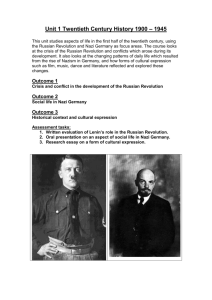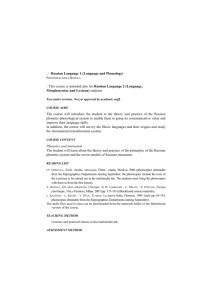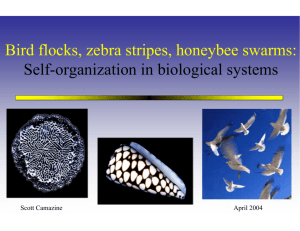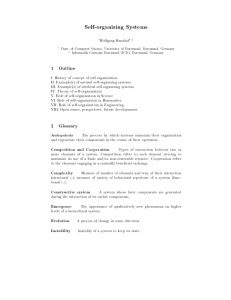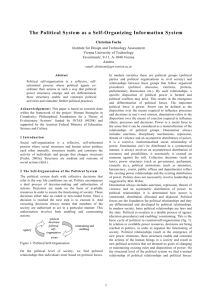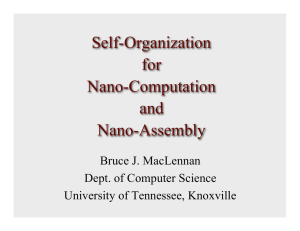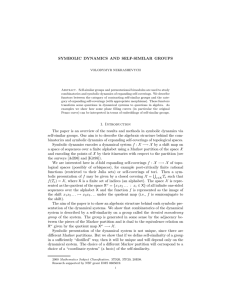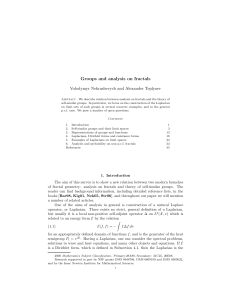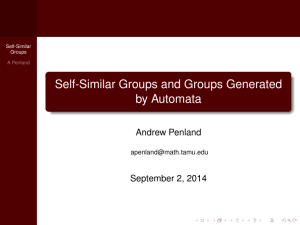Effective connections among Russian and European scientists. S
advertisement
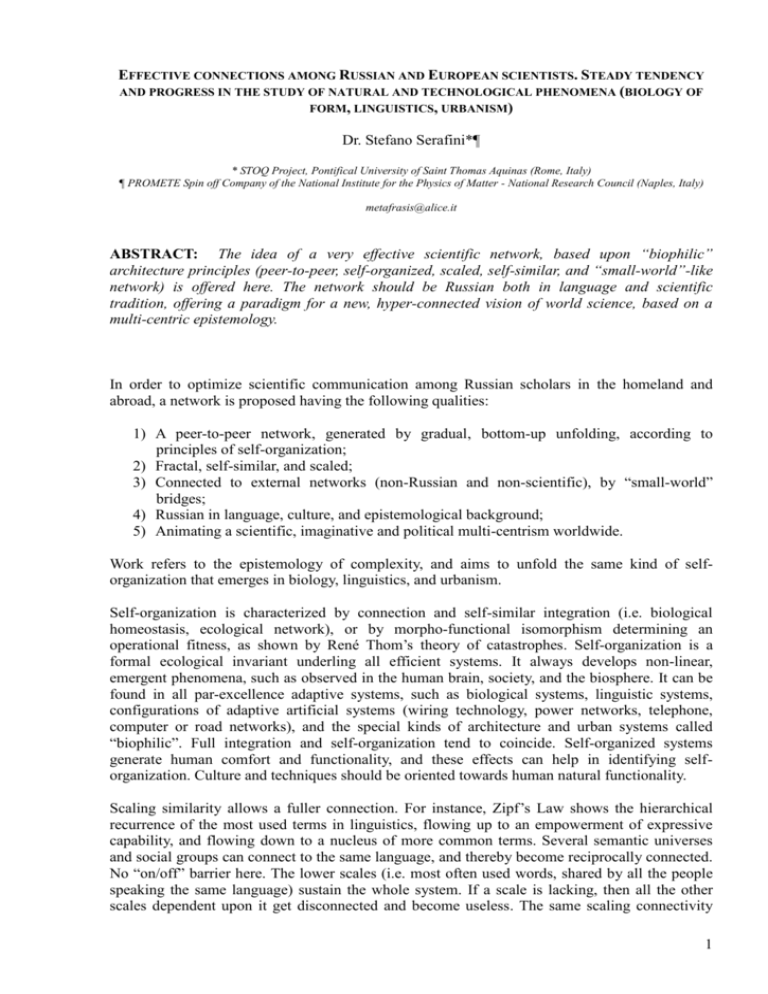
EFFECTIVE CONNECTIONS AMONG RUSSIAN AND EUROPEAN SCIENTISTS. STEADY TENDENCY AND PROGRESS IN THE STUDY OF NATURAL AND TECHNOLOGICAL PHENOMENA (BIOLOGY OF FORM, LINGUISTICS, URBANISM) Dr. Stefano Serafini*¶ * STOQ Project, Pontifical University of Saint Thomas Aquinas (Rome, Italy) ¶ PROMETE Spin off Company of the National Institute for the Physics of Matter - National Research Council (Naples, Italy) metafrasis@alice.it ABSTRACT: The idea of a very effective scientific network, based upon “biophilic” architecture principles (peer-to-peer, self-organized, scaled, self-similar, and “small-world”-like network) is offered here. The network should be Russian both in language and scientific tradition, offering a paradigm for a new, hyper-connected vision of world science, based on a multi-centric epistemology. In order to optimize scientific communication among Russian scholars in the homeland and abroad, a network is proposed having the following qualities: 1) A peer-to-peer network, generated by gradual, bottom-up unfolding, according to principles of self-organization; 2) Fractal, self-similar, and scaled; 3) Connected to external networks (non-Russian and non-scientific), by “small-world” bridges; 4) Russian in language, culture, and epistemological background; 5) Animating a scientific, imaginative and political multi-centrism worldwide. Work refers to the epistemology of complexity, and aims to unfold the same kind of selforganization that emerges in biology, linguistics, and urbanism. Self-organization is characterized by connection and self-similar integration (i.e. biological homeostasis, ecological network), or by morpho-functional isomorphism determining an operational fitness, as shown by René Thom’s theory of catastrophes. Self-organization is a formal ecological invariant underling all efficient systems. It always develops non-linear, emergent phenomena, such as observed in the human brain, society, and the biosphere. It can be found in all par-excellence adaptive systems, such as biological systems, linguistic systems, configurations of adaptive artificial systems (wiring technology, power networks, telephone, computer or road networks), and the special kinds of architecture and urban systems called “biophilic”. Full integration and self-organization tend to coincide. Self-organized systems generate human comfort and functionality, and these effects can help in identifying selforganization. Culture and techniques should be oriented towards human natural functionality. Scaling similarity allows a fuller connection. For instance, Zipf’s Law shows the hierarchical recurrence of the most used terms in linguistics, flowing up to an empowerment of expressive capability, and flowing down to a nucleus of more common terms. Several semantic universes and social groups can connect to the same language, and thereby become reciprocally connected. No “on/off” barrier here. The lower scales (i.e. most often used words, shared by all the people speaking the same language) sustain the whole system. If a scale is lacking, then all the other scales dependent upon it get disconnected and become useless. The same scaling connectivity 1 rules urban morpho-functional patterns. Watts and Strogatz’s small-world theory showed that a network obtains its highest efficiency and speed when it is connected somewhere in-between regularity and disorder. Random connections allow skipping serial elements, and reduce the number of passages needed to reach any point inside the network. Small-world network efficiency grows with random connections, according to the following formula: n >> k >> ln(n) >> 1 where n denotes the graph’s vertices, and k its edges. The condition k >> ln(n) guarantees that the graph is not disconnected. The percentage of random connection needed to make the network whole is the natural logarithm of n [1n(n)/n], and this says that this percentage diminishes according to a power law, as the number of edges grows. A constant and scalar ratio regulates system efficiency: below it, efficiency decreases; above it, dispersion occurs. This is the kind of adaptive and self-organized network we find in the real world. Proteins, food chain ecosystems, human nervous system, languages; all of these are “small-worlds”. A one-language monopoly in science exists not only for practical reasons. Universal use of English also reflects a few institutions’ imperialism over all the others. This involves: 1) uniformity to an apparently global expressive model, hiding a monopolistic view of the world and epistemology; 2) consequent separation from one’s specific and historical culture, and local needs; 3) the loss of schools of thought, research traditions, and a quantity of data, no matter if they become apparently just “re-elaborated”. The Russian Federation has enough material and human resources to enforce an autonomous epistemological pole. The Scientific Diaspora affecting the homeland’s universities during the ‘90s seeded an outstanding world-wide hyper-connection. This can invert the current direction of the “brain drain”, getting back – in an enriched form – the previously exported skills. A Russian network will not in any way produce a soviet-fashion scientific isolation. On the contrary, a highly complex, interconnected, multi-centric world-wide organization will rise from it. Its positive effects would go beyond the Russian Federation. Typical Russian love for culture and arts would make such a scientific network hologrammatical, and produce complex effects that go much further than in science. As a concrete instantiation of a self-generated network, the Italian-speaking “Salingaros Group” (“Gruppo Salingaros”) is presented. This is a highly-efficient scientific, cultural and political lobby, rapidly unfolded by the interest of some scholars and professionals in the urban theories of Nikos Salingaros. 2






